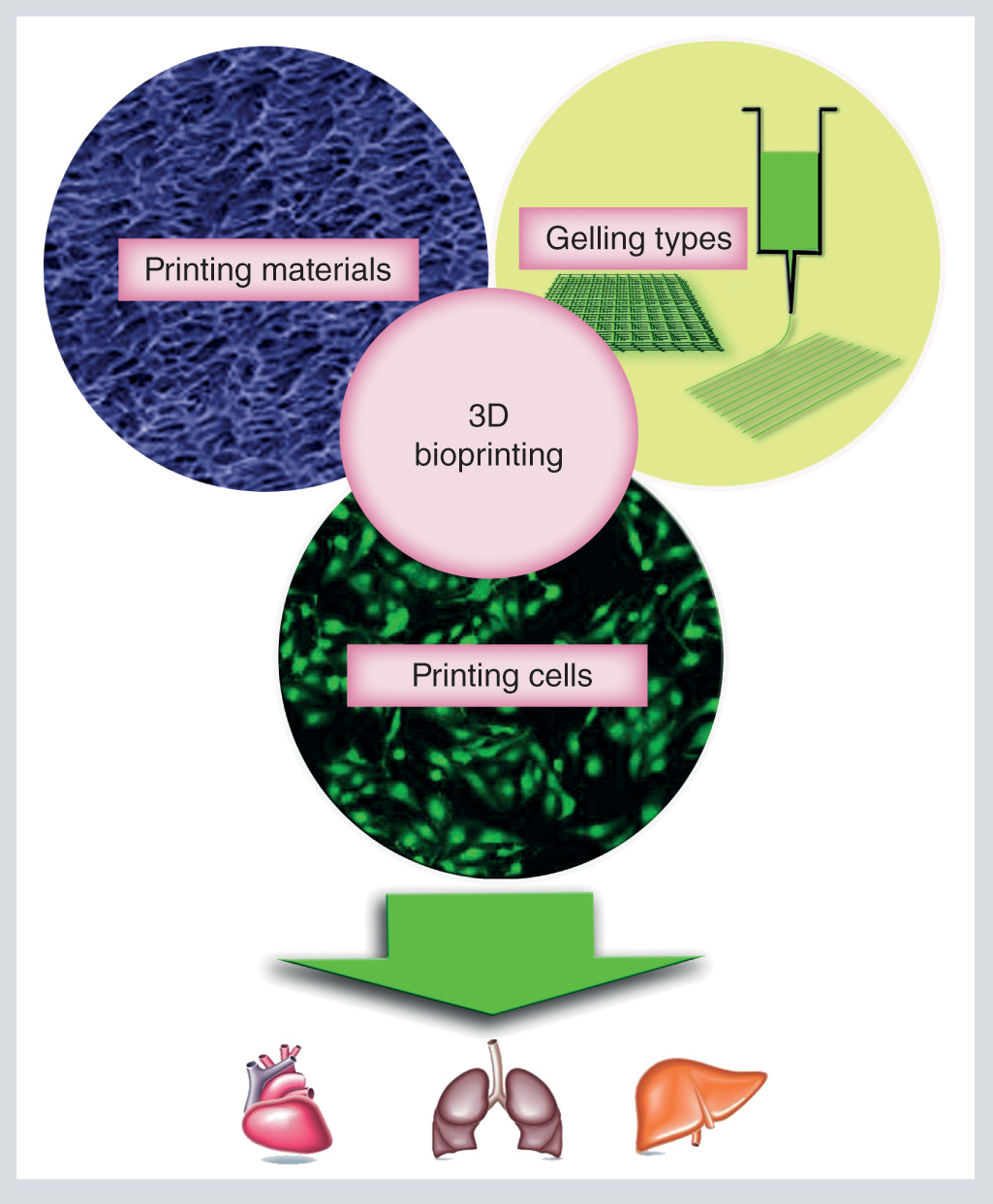Abstract
Fabrication of 3D scaffolds with patient-specific designs, high structural and component complexity, and rapid on-demand production at a low-cost by printing technique has attracted ever-increasing interests in tissue engineering. Cell-laden 3D bioprinting offers good prospects for future organ transplantation. Compared with nonbiological 3D printing, cell-laden 3D bioprinting involves more complex factors, including the choice of printing materials, the strategy of gelling, cell viability and technical challenges. Although cell-populated 3D bioprinting has so many complex factors, it has proven to be a useful and exciting tool with wide potential applications in regenerative medicine to generate a variety of transplantable tissues. In this review, we first overview the bioprinting materials, gelling strategies and some major applications of cell-laden 3D bioprinting, with main focus on the recent advances and current challenges of the field. Finally, we propose some future directions of the cell-populated 3D bioprinting in tissue engineering and regenerative medicine.

In this review, we first overview the bioprinting materials, gelling strategies and some major applications of cell-populated 3D bioprinting, with main focus on the recent advances and current challenges of the field. Finally, we propose some future directions of the cell-laden 3D bioprinting in tissue engineering and regenerative medicine.
Financial & competing interests disclosure
This work was sponsored by Key Research Program of the Chinese Academy of Sciences (No. ZDRW-ZS-2016–2–3), and the Ministry of Science and Technology of China (Nos. 2017YFA0104301 and 2016YFC1000809). The authors have no other relevant affiliations or financial involvement with any organization or entity with a financial interest in or financial conflict with the subject matter or materials discussed in the manuscript apart from those disclosed.
No writing assistance was utilized in the production of this manuscript.
Supplementary data
To view the supplementary data that accompany this paper please visit the journal website at: www.tandfonline.com/doi/suppl/full/10.2217/3dp-2017-0010
